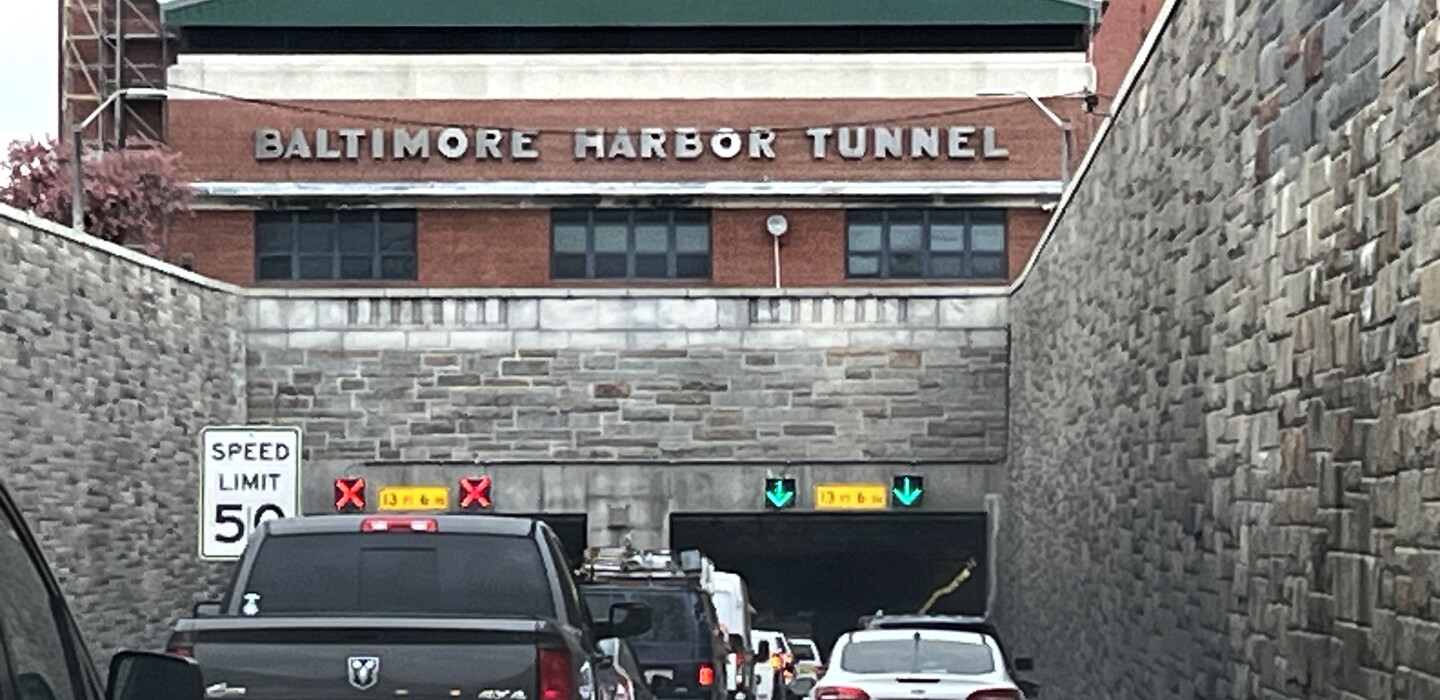
Baltimore May Get Flood Walls at Tunnel Entrances
(TNS) – The Army Corps of Engineers is proposing flood walls be constructed to protect the entrances of Baltimore’s Fort McHenry and Harbor tunnels amid a growing flood risk due to climate change.
The project, which has an estimated price tag of $77 million, was proposed following a three-year study of storm risk in Baltimore, particularly to key infrastructure along the Patapsco River.
If completed, motorists can expect to see new walls rise along the southern approaches to both tunnels, ranging from 2.5 to 6.5 feet from the ground, said Cynthia Mitchell, a spokesperson for the Baltimore District of the Army Corps, in an email.
The existing walls at the tunnel entrances were not built to withstand floodwaters, and engineers would determine during the design phase for the project whether they would have to be replaced, Mitchell said.
The two tunnels together would receive about 9,500 linear feet of flood walls, protecting both the entrances and the ventilation buildings for each tunnel, according to a news release from the Army Corps. The walls would include closure structures ranging in length from 20 to 50 feet. When not needed, the closures could be left open, Mitchell said.
The height was selected based on an “intermediate” estimate of sea-level rise, according to the study — somewhere between the most and least extreme predictions for the average water level in the Patapsco River in the coming decades. It is meant to reduce the flood risk from an intense 100-year storm event, according to Monday’s release.
By the year 2100, the average sea level in Baltimore is estimated to increase by 1, 2.1 or 5.4 feet (in low, intermediate and high scenarios, respectively), according to a 2015 study by the Army Corps called the North Atlantic Coast Comprehensive Study.
Higher water levels could raise the flood risk associated with storms in the Baltimore area. Steady population growth and continued development along the shoreline in the region mean the risk for injury, loss of life and property damage is also increasing, according to the Army Corps.
The Fort McHenry Tunnel on Interstate 95, which connects South Baltimore’s Locust Point to the Canton Industrial area on the eastern side of the city, is used by about 45 million vehicles per year, and the Harbor Tunnel on I-895, which connects South Baltimore communities such as Brooklyn to Southeastern Baltimore City, is used by about 27 million vehicles per year, according to Joe Bieberich, project manager for the storm risk study conducted for Baltimore by the Army Corps.
“It is very important to make sure these critical transportation routes remain open during a coastal storm event, maintaining access to jobs, commercial transportation routes and emergency services,” Bieberich said in Monday’s release.
The area studied by the Army Corps for coastal flood risk incorporated all of the city’s Patapsco River shoreline, including the Inner Harbor, Federal Hill, Fells Point, Canton and a swath of South Baltimore. The Army Corps also evaluated Martin State Airport in Baltimore County during the study.
The tunnel projects were selected based on cost-effectiveness and need, but they’re considered a “first bite at the apple,” Mitchell said, and future protective actions could be proposed later.
This year’s collapse of the Francis Scott Key Bridge due to a March ship strike, which killed six construction workers, brings the importance of infrastructure protection into harsh relief, officials say.
“The people of Baltimore know all too well the impact caused when vital transportation infrastructure is lost. This project would improve the resiliency of the tunnels, which are critical routes for the transportation of goods and services in the state of Maryland and along the Eastern seaboard,” Lt. Gen. Scott A. Spellmon, the Army Corps’ commanding general, said in Monday’s news release.
The Army Corps has recommended that Congress approve funding for 65% of the project’s cost. The other 35% would be picked up by the Maryland Transportation Authority, which owns and operates both tunnels. Spellmon signed the recommendation Aug. 5 during a ceremony at the Army Corps headquarters in Washington, D.C.
The projected cost could increase if contamination is found in the soils near the tunnels, according to the study, which was funded jointly by the Army Corps and the transportation authority. The construction will also require right-of-way agreements with landowners, which could be “difficult and time consuming to obtain, particularly on railroad properties,” the study stated.
But if all goes according to plan, construction would begin in 2027, according to the release. Design work is likely to begin later this year.
It’s estimated that the new flood wall infrastructure would cost the transportation authority about $60,000 annually at the Fort McHenry Tunnel and about $130,000 annually at the Harbor Tunnel, according to the study.
In a statement, John Sales, a spokesman for the transportation authority, said the agency “greatly appreciates” the report from the Army Corps, calling it “a first step in evaluation for any potential project.”
“Given that the design phase is not anticipated until later this year, the MDTA has not determined a more refined total cost estimate for the project, right of way impacts or project schedule. The MDTA will also still need to consider whether federal grants are available to support MDTA’s efforts,” Sales wrote.
©2024 Baltimore Sun. Visit baltimoresun.com. Distributed by Tribune Content Agency, LLC.


Average Rating